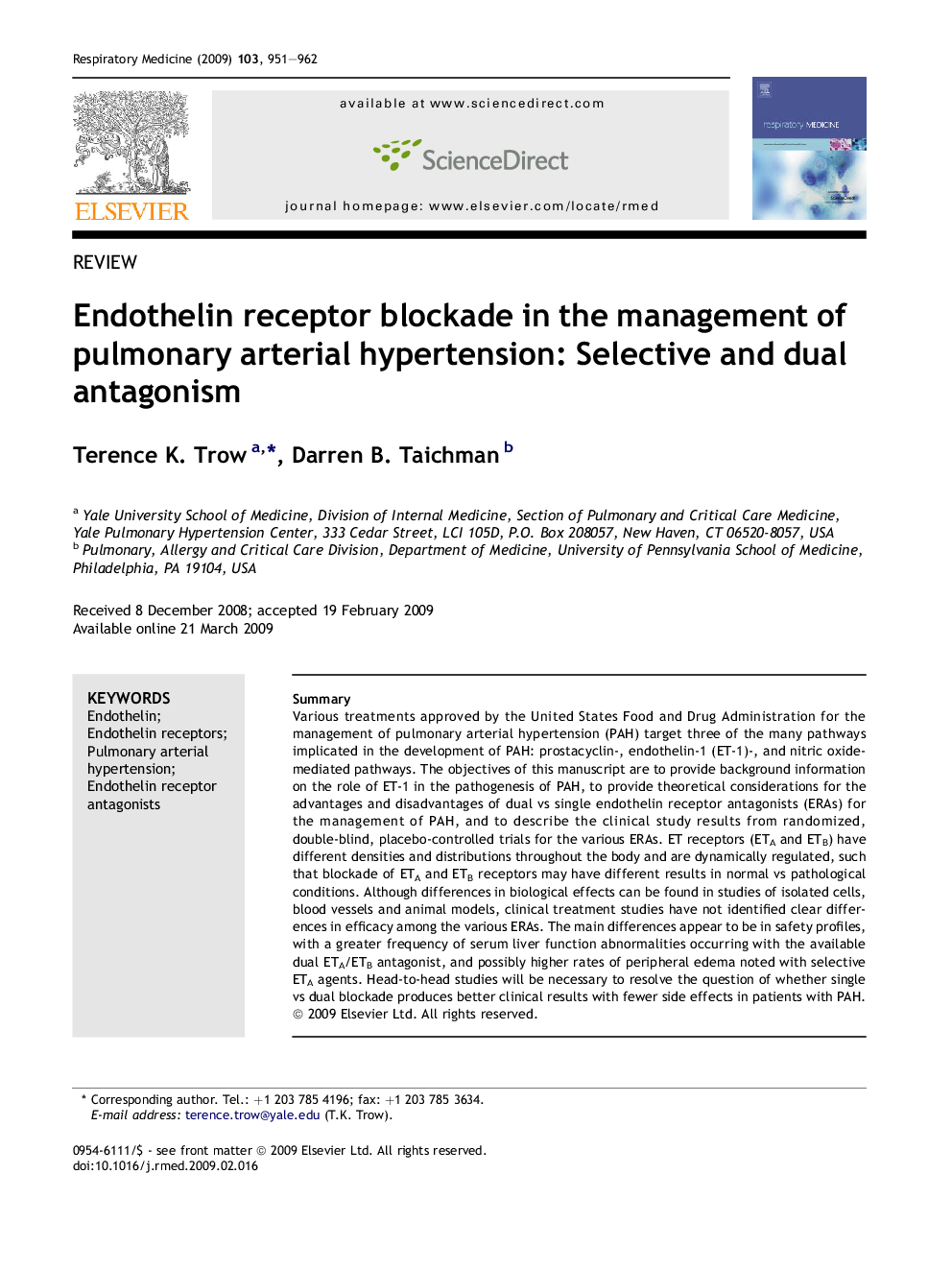| Article ID | Journal | Published Year | Pages | File Type |
|---|---|---|---|---|
| 4211190 | Respiratory Medicine | 2009 | 12 Pages |
SummaryVarious treatments approved by the United States Food and Drug Administration for the management of pulmonary arterial hypertension (PAH) target three of the many pathways implicated in the development of PAH: prostacyclin-, endothelin-1 (ET-1)-, and nitric oxide-mediated pathways. The objectives of this manuscript are to provide background information on the role of ET-1 in the pathogenesis of PAH, to provide theoretical considerations for the advantages and disadvantages of dual vs single endothelin receptor antagonists (ERAs) for the management of PAH, and to describe the clinical study results from randomized, double-blind, placebo-controlled trials for the various ERAs. ET receptors (ETA and ETB) have different densities and distributions throughout the body and are dynamically regulated, such that blockade of ETA and ETB receptors may have different results in normal vs pathological conditions. Although differences in biological effects can be found in studies of isolated cells, blood vessels and animal models, clinical treatment studies have not identified clear differences in efficacy among the various ERAs. The main differences appear to be in safety profiles, with a greater frequency of serum liver function abnormalities occurring with the available dual ETA/ETB antagonist, and possibly higher rates of peripheral edema noted with selective ETA agents. Head-to-head studies will be necessary to resolve the question of whether single vs dual blockade produces better clinical results with fewer side effects in patients with PAH.
